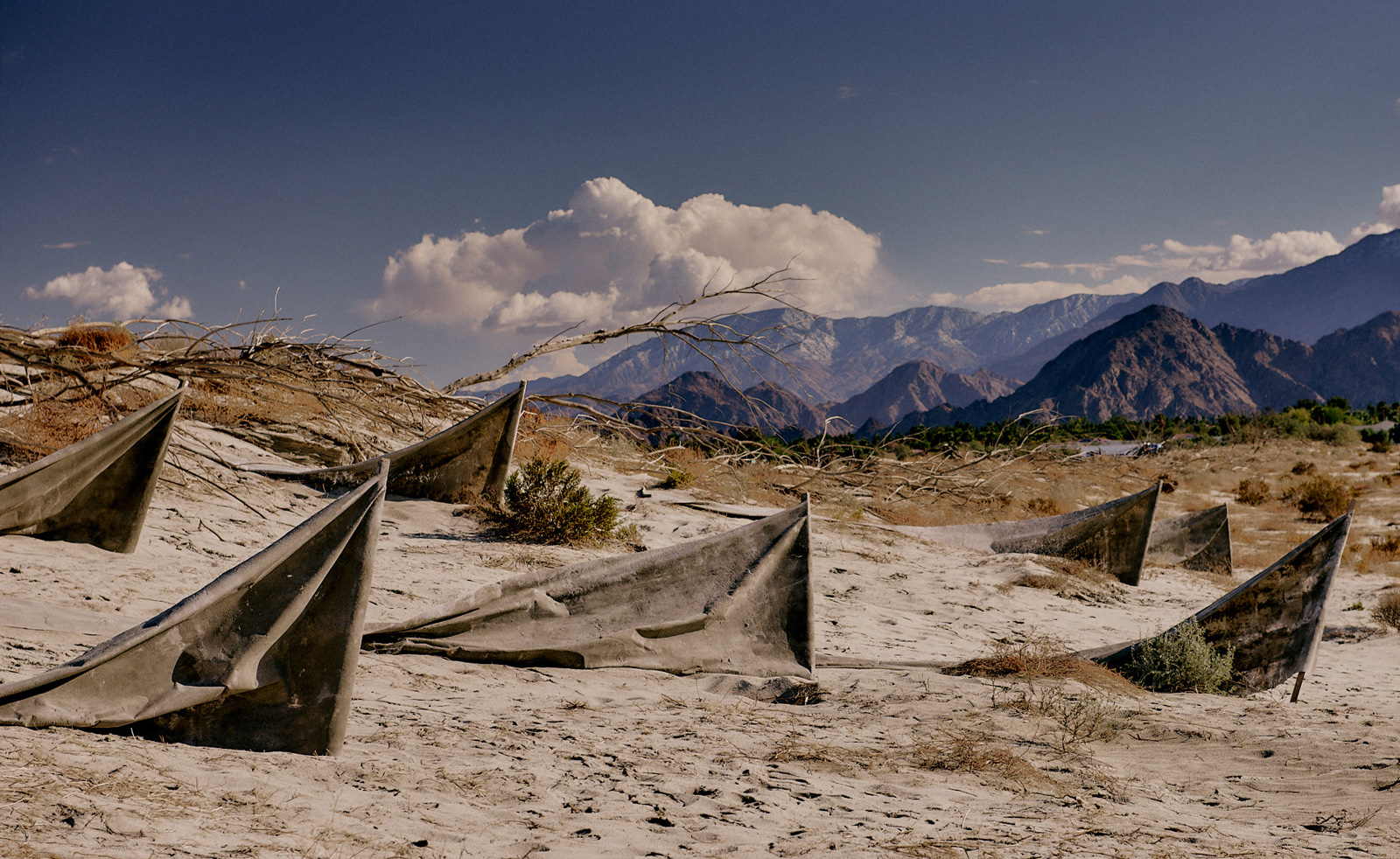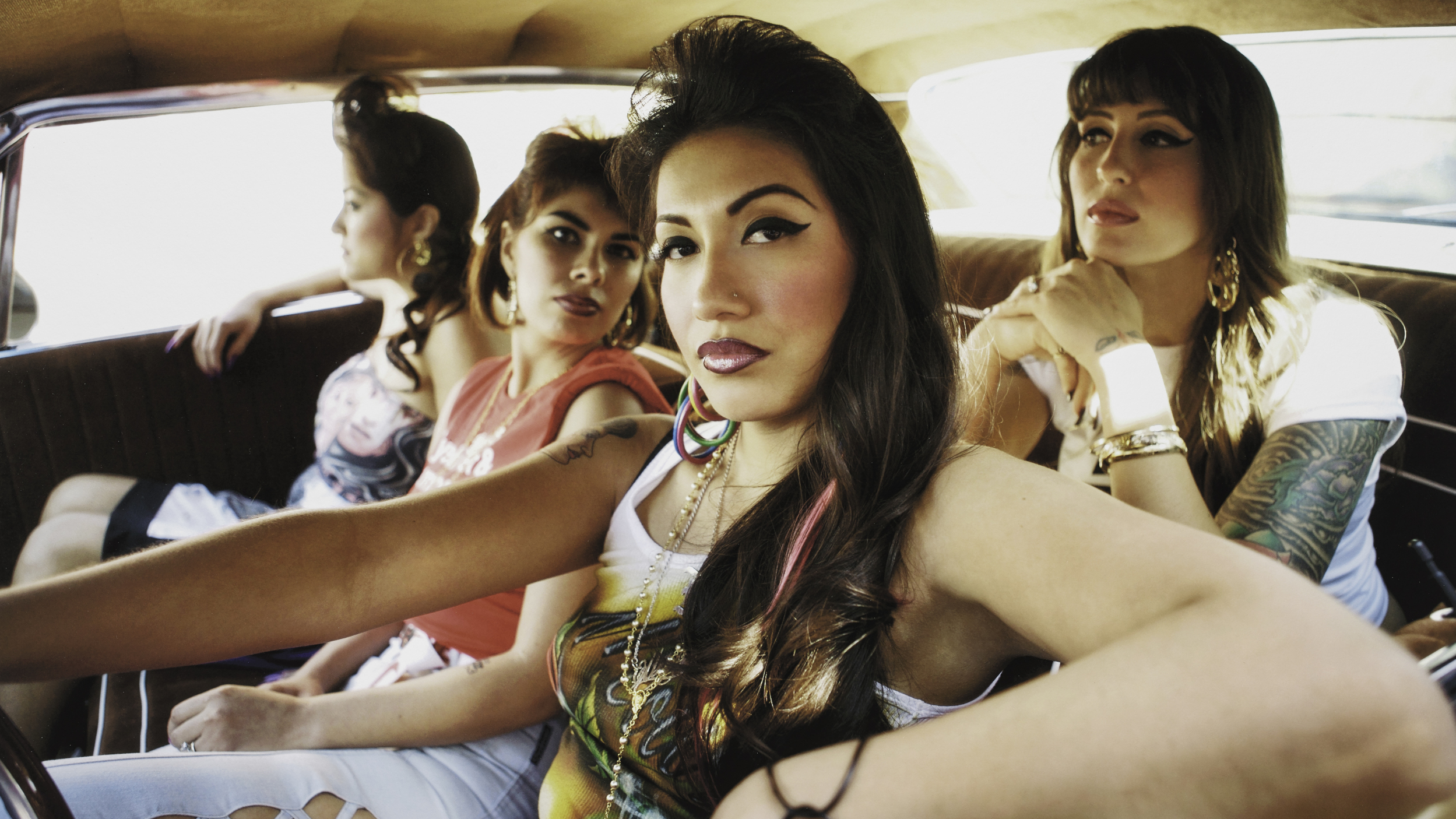Lucy McRae on gene editing, human intimacy, and tangible science fiction
We explore the universe of sci-fi artist and ‘body architect’ Lucy McRae, whose science fiction works fuse human intimacy, biological perfection and speculative, yet eerily familiar futures

Charles White - Photography
‘I have always been driven by the provocation: How would advanced technologies change our bodies, change our minds?’ British-born Australian artist Lucy McRae explains over a video call from her studio in Los Angeles. The multidisciplinary artist and ‘body architect’ has just opened her first exhibition in the city – and in America – at Honor Fraser gallery. ‘Future Sensitive’ will debut two short films, Futurekin and Delicate Spells of Mind, alongside costumes adapted from objects sourced from McRae’s home and transformed into assemblages; a third film, Institute of Isolation, which was released in 2016, ‘contemplates whether isolation may be a gateway to training human resilience’; while a series of sculptures, garments and photography are also featured.
The exhibition ‘gestures towards a future where advanced genetic engineering will enable humans to be grown in laboratories outside of the womb,’ says McRae. It’s a complex proposition, at once uncanny and realistic, which the artist processes and communicates through world-building, both in her films and in the design of the exhibition. ‘I am always trying to build worlds physically or thematically. Instead of it being a process of “write a script, find the protagonist and build the world”, I start with an object, or a costume, or a machine, which becomes the protagonist, and build the world around it,’ says McRae. ‘I build these “what if?” scenarios and play them out, trying to understand: Do we want this? If reproducing human biology in a laboratory is possible, should we?’

Installation view of 'Future Sensitive' by Lucy McRae at Honor Fraser Gallery.
Genetic engineering and CRISPR technology, which can be used to edit genes, have played an important role in McRae’s research for years; her practice is focused on themes of human intimacy, reproductive technology, wellness culture and human biology, as well as ‘dabbling in artificial intelligence and edible technology’. Honor Fraser had seen McRae’s work on CRISPR while working on a project with her at SCI-Arc (Southern California Institute of Architecture), where McRae was formulating ‘an artistic lens on complex science’. A few years later, with the opening of ‘Future Sensitive’, McRae’s work is entering a more public conversation on genetic engineering at a critical time. ‘There is no consensus, no committee around the ethics of CRISPR. This exhibition is a way to speak to that.’
Futurekin looks at new forms of intimacy and care, following a group of women with the common goal of curating a tribe of ‘futurekin’ outside of the body. What sets them apart is that their mission is not about achieving perfection, intelligence and beauty, it is about nurturing weakness, vulnerability, serendipity, and accidents. ‘I think we are being presented with this choice now, a crossroads where science is on a mission for biological perfection, but what are we going to lose?’

Installation view of 'Future Sensitive' by Lucy McRae at Honor Fraser Gallery.
Delicate Spells of Mind is rooted in McRae’s long-standing interest in Buddhism, and a period of reflection during the early months of the pandemic, when she considered: ‘Is there a way – and this is obviously not the case – to circumnavigate pain, and to avoid suffering?’ She worked on the film with choreographer Jasmine Albuquerque, and it follows a protagonist who is dragging a machine, ‘which is her way of trying to avoid any kind of obstacle, among a group of seven dancers, who represent her thoughts and shadows’. Nearly three years into the pandemic, Institute of Isolation takes on a new significance. Although it tells the story of people preparing their bodies for life on Mars, the film’s focus on the physiological and mental repercussions of spending years in a confined space, in sensory deprivation, and increasingly reliant on technology, feels less like a far-flung potential and more hauntingly familiar.
McRae is intent on keeping her work open to interpretation, encouraging the audience to draw their own conclusions based on their experiences and desires, and in the case of ‘Future Sensitive’, becoming players in the work as it extends out from the screen into the rooms of the gallery. ‘I believe that if you can really move someone emotionally, or through their body, then that is a way to connect in a lasting way. I am sure you have your experiences of where you feel something, or you watch something, and you are so moved it shifts your trajectory. I think that is what is needed now.’

Installation view of 'Future Sensitive' by Lucy McRae at Honor Fraser Gallery.
Although McRae’s work looks toward the future, it is rooted in the present, both thematically and in its materiality: ‘I think there is power in familiarity, even though many of us like to depart from what we know.’ Working with found materials, adapting clothing, using beanbag balls, recycled foam, and carpet underlay, McRae utilises lo-tech, imperfect techniques to bring a productive vulnerability to her work and demystify the often impenetrable spaces of future technology and science fiction. ‘My work can include Tupperware or grass, but the underlying message is far out, and absurd, and kind of existential,’ says McRae. ‘If we are talking about something as complex as cutting out DNA from an embryo, then if we can anchor that in something tactile, or physical, or familiar to us, I believe that we can connect with that concept in a more impactful and behavioural way.’
Wallpaper* Newsletter
Receive our daily digest of inspiration, escapism and design stories from around the world direct to your inbox.
By critically engaging with, reflecting on, and producing narratives informed by the technology and ideas that may shape our future, Lucy McRae has carved out a unique point of view: ‘To many, it is science fiction, but to me, these are potential scenarios. I am realising that my work can be prophetic.’

Installation view of 'Future Sensitive' by Lucy McRae at Honor Fraser Gallery.

Installation view of 'Future Sensitive' by Lucy McRae at Honor Fraser Gallery.
INFORMATION
Lucy McRae, 'Future Sensitive', until 17 December 2022 honorfraser.com
On 28 October, McRae will hold a talk on The Architecture Of Fashion as part of the SCCI Fashion Hub Weekend at the Design Museum. designmuseum.org
-
 Naoto Fukasawa sparks children’s imaginations with play sculptures
Naoto Fukasawa sparks children’s imaginations with play sculpturesThe Japanese designer creates an intuitive series of bold play sculptures, designed to spark children’s desire to play without thinking
By Danielle Demetriou
-
 Japan in Milan! See the highlights of Japanese design at Milan Design Week 2025
Japan in Milan! See the highlights of Japanese design at Milan Design Week 2025At Milan Design Week 2025 Japanese craftsmanship was a front runner with an array of projects in the spotlight. Here are some of our highlights
By Danielle Demetriou
-
 Tour the best contemporary tea houses around the world
Tour the best contemporary tea houses around the worldCelebrate the world’s most unique tea houses, from Melbourne to Stockholm, with a new book by Wallpaper’s Léa Teuscher
By Léa Teuscher
-
 Leonard Baby's paintings reflect on his fundamentalist upbringing, a decade after he left the church
Leonard Baby's paintings reflect on his fundamentalist upbringing, a decade after he left the churchThe American artist considers depression and the suppressed queerness of his childhood in a series of intensely personal paintings, on show at Half Gallery, New York
By Orla Brennan
-
 Unlike the gloriously grotesque imagery in his films, Yorgos Lanthimos’ photographs are quietly beautiful
Unlike the gloriously grotesque imagery in his films, Yorgos Lanthimos’ photographs are quietly beautifulAn exhibition at Webber Gallery in Los Angeles presents Yorgos Lanthimos’ photography
By Katie Tobin
-
 Desert X 2025 review: a new American dream grows in the Coachella Valley
Desert X 2025 review: a new American dream grows in the Coachella ValleyWill Jennings reports from the epic California art festival. Here are the highlights
By Will Jennings
-
 Cowboys and Queens: Jane Hilton's celebration of culture on the fringes
Cowboys and Queens: Jane Hilton's celebration of culture on the fringesPhotographer Jane Hilton captures cowboy and drag queen culture for a new exhibition and book
By Hannah Silver
-
 New gallery Rajiv Menon Contemporary brings contemporary South Asian and diasporic art to Los Angeles
New gallery Rajiv Menon Contemporary brings contemporary South Asian and diasporic art to Los Angeles'Exhibitionism', the inaugural showcase at Rajiv Menon Contemporary gallery in Hollywood, examines the boundaries of intimacy
By Aastha D
-
 Helmut Lang showcases his provocative sculptures in a modernist Los Angeles home
Helmut Lang showcases his provocative sculptures in a modernist Los Angeles home‘Helmut Lang: What remains behind’ sees the artist and former fashion designer open a new show of works at MAK Center for Art and Architecture at the Schindler House
By Francesca Perry
-
 In ‘The Last Showgirl’, nostalgia is a drug like any other
In ‘The Last Showgirl’, nostalgia is a drug like any otherGia Coppola takes us to Las Vegas after the party has ended in new film starring Pamela Anderson, The Last Showgirl
By Billie Walker
-
 ‘American Photography’: centuries-spanning show reveals timely truths
‘American Photography’: centuries-spanning show reveals timely truthsAt the Rijksmuseum in Amsterdam, Europe’s first major survey of American photography reveals the contradictions and complexities that have long defined this world superpower
By Daisy Woodward